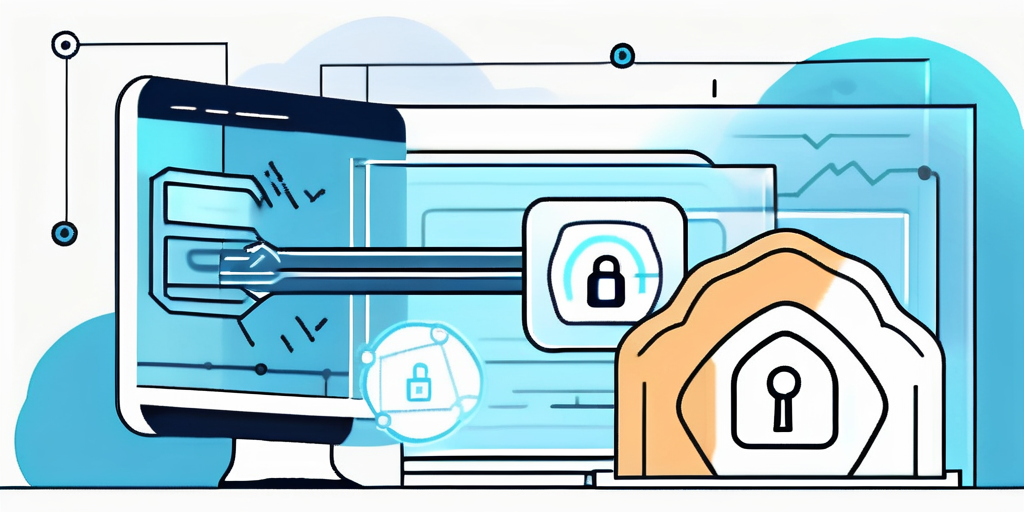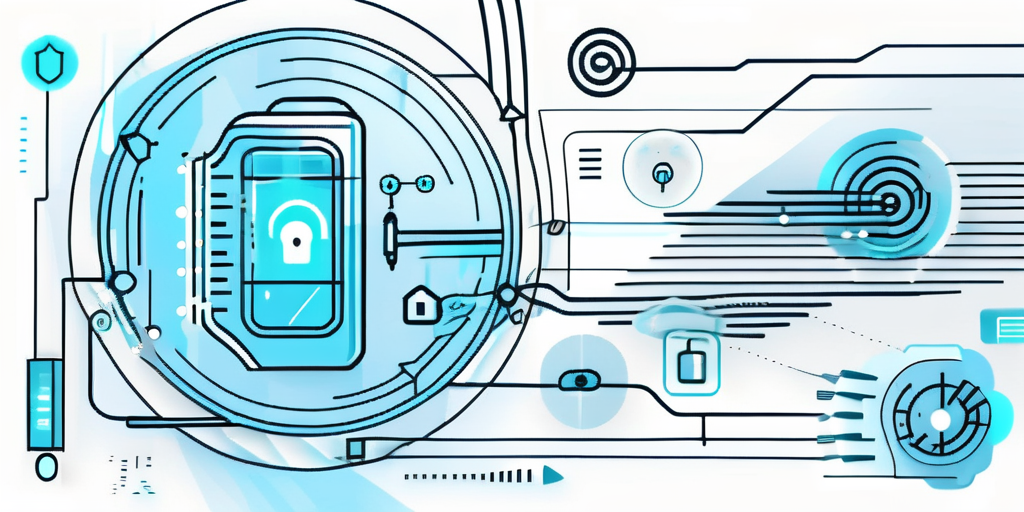Updated July 12, 2025
Ensuring the security of online accounts and sensitive data has become more crucial than ever. Cybercriminals are constantly devising new techniques to gain unauthorized access and exploit vulnerabilities. This is where Multi-Factor Authentication (MFA) comes into play, offering an additional layer of protection. Understanding MFA and its role in cybersecurity is essential for individuals and organizations alike.
Understanding Multi-Factor Authentication
MFA refers to a security approach that requires users to provide multiple pieces of evidence to verify their identity. These factors typically fall into three categories: something you know, something you have, and something you are. By combining these factors, MFA ensures a higher security level than traditional password-based authentication.
Defining Multi-Factor Authentication
Multi-Factor Authentication, commonly abbreviated as MFA, is a security mechanism that requires users to provide multiple forms of identification to access their accounts or sensitive information. This approach adds an extra layer of protection to ensure that only authorized individuals can gain access.
In today’s digital age, where cyber threats are becoming increasingly sophisticated, relying solely on passwords for authentication is no longer sufficient. Hackers have developed various techniques to crack passwords, such as brute-force attacks, dictionary attacks, and phishing scams. Therefore, organizations and individuals are turning to MFA as a more robust solution to protect their valuable data.
MFA significantly reduces the risk of unauthorized access by requiring users to provide multiple identification factors. Even if one factor is compromised, the attacker must bypass the other factors to gain entry. This multi-layered approach provides an additional barrier against cybercriminals, making it much more challenging for them to breach security defenses.
The Components of MFA
The factors used in MFA can vary depending on the implementation. Some common components include:
- Knowledge Factor: This involves something the user knows, such as a password, PIN, or security question answer.
- Possession Factor: This refers to something the user has, such as a mobile device, smart card, or hardware token.
- Inherence Factor: This involves something the user is, such as biometric data (fingerprint, facial recognition, etc.).
Each factor adds a layer of security, requiring the user to provide different types of information or possess specific physical objects. For example, a hacker may be able to guess a user’s password, but without possessing their mobile device or the user’s fingerprint, they would still be unable to gain access.
MFA can be customized based on the level of security required for different systems or applications. Organizations may choose to implement MFA that combines all three factors for highly sensitive information, while less critical systems may only need two factors.
Combining two or more factors significantly increases attackers’ difficulty in gaining unauthorized access. Even if one factor is compromised, the other factors act as a safeguard, ensuring that the user’s identity remains protected.
Overall, Multi-Factor Authentication is an essential security measure in today’s digital landscape. By implementing MFA, individuals and organizations can enhance their defense against cyber threats, safeguard their sensitive information, and provide a more secure user experience.
The Role of MFA in Cybersecurity
In today’s interconnected world, the threat landscape is constantly evolving. Cybercriminals use sophisticated techniques to exploit vulnerabilities and gain unauthorized access to sensitive data. MFA plays a crucial role in mitigating these threats and enhancing cybersecurity.
But what exactly is MFA? MFA stands for Multi-Factor Authentication, a security measure requiring users to provide multiple forms of identification to access a system or application. This typically includes something the user knows (such as a password), something the user has (such as a mobile device), and something the user is (such as a fingerprint or facial recognition).
The Threat Landscape
Cyberattacks can have severe consequences for individuals and organizations. Common threats include phishing attacks, password cracking, and unauthorized access through stolen credentials. These attacks can lead to data breaches, financial loss, reputational damage, and even legal consequences.
Phishing attacks, for example, involve tricking individuals into revealing their login credentials by posing as a legitimate entity. Once the attacker obtains the credentials, they can gain unauthorized access to sensitive information or systems. Password cracking, on the other hand, involves using automated tools to guess or crack passwords, taking advantage of weak or easily guessable combinations.
Another significant threat is unauthorized access through stolen credentials. Cybercriminals may obtain login credentials through various means, such as data breaches or social engineering techniques. Once they have the credentials, they can impersonate legitimate users and gain access to sensitive data or systems.
How MFA Enhances Security
MFA significantly reduces the risk of unauthorized access by making it much more difficult for attackers to bypass authentication measures. Even if a password or PIN is compromised, additional factors make it virtually impossible for attackers to proceed further without the authorized user’s presence or another form of authentication.
For example, an attacker can obtain a user’s password through a phishing attack. Without MFA, the attacker would have full access to the user’s account or system. However, with MFA enabled, the attacker would still need to provide additional factors, such as a unique code generated by a mobile app or a fingerprint scan, to authenticate successfully. This additional layer of security makes it extremely difficult for attackers to gain unauthorized access, even if they have the user’s password.
MFA also adds an extra layer of protection against password cracking attacks. Even if an attacker can crack a user’s password, they would still need to provide the additional authentication factors to proceed. This significantly increases the complexity and time required for an attacker to compromise an account or system.
MFA can help detect and prevent unauthorized access through stolen credentials. If an attacker obtains a user’s login credentials, they still need to provide the additional authentication factors to authenticate successfully. This would raise red flags and alert the system administrators or security teams of a potential security breach.
The Benefits of Implementing MFA
MFA is a robust security measure that protects sensitive information from unauthorized access. By requiring users to provide multiple authentication methods, MFA significantly enhances security and reduces the risk of data breaches.

Increased Security
Implementing MFA goes beyond the traditional username and password combination. It adds an extra layer of security by requiring users to provide additional factors, such as a fingerprint scan, a one-time password, or a security token. This multi-layered approach makes it significantly harder for attackers to gain unauthorized access, even if they compromise a user’s password.
For example, an employee’s password gets leaked due to a phishing attack. Without MFA, the entire system would be at risk. However, with MFA in place, the attacker would still need to provide the additional authentication factor, such as a fingerprint scan or a one-time password, making it much more challenging for them to proceed further.
User Convenience
While security is of utmost importance, user convenience is also crucial when implementing any security measure. MFA solutions have evolved to provide a seamless and user-friendly experience.
Modern MFA solutions offer various authentication options that balance security and convenience. For example, users can receive push notifications on their smartphones, allowing them to approve or deny login attempts with a simple tap. Biometric authentication, such as fingerprint or facial recognition, has also become widely available, making the login process quick and effortless.
Hardware tokens, such as smart cards or USB devices, provide an additional layer of security without compromising user convenience. These tokens generate one-time passwords that users can easily enter during the authentication process, ensuring a positive user experience while maintaining a high level of security.
Regulatory Compliance
Many industries, such as healthcare and finance, have stringent regulations regarding data security. Implementing MFA can help organizations meet compliance requirements and safeguard against potential penalties or legal issues.
For instance, the Health Insurance Portability and Accountability Act (HIPAA) in the United States requires healthcare organizations to implement measures to protect patient data. MFA is considered a best practice in the healthcare industry, as it adds an extra layer of security to prevent unauthorized access to sensitive medical records and personal information.
Similarly, the Payment Card Industry Data Security Standard (PCI DSS) mandates that organizations handling credit card information use MFA. By implementing MFA, businesses can ensure compliance with these regulations and protect their customers’ financial data from unauthorized access.
Challenges in MFA Implementation
User Resistance
One of the challenges faced during MFA implementation is user resistance. Users may feel inconvenienced by the additional steps required for authentication. However, with proper education and awareness, users can understand the importance of MFA in safeguarding their personal information and adjust to the new security measures.
When implementing MFA, organizations need to consider the different levels of technical proficiency among their user base. Some users may be more resistant to change and may require additional support and guidance to understand and embrace the new authentication process. Providing clear instructions, conducting training sessions, and offering user-friendly resources can help alleviate user resistance and encourage adoption of MFA.
Organizations can emphasize MFA’s benefits to users. By highlighting how MFA enhances security and protects against unauthorized access, organizations can help users perceive the inconvenience of additional authentication steps as a worthwhile trade-off for increased protection of their sensitive data.
Technical Difficulties
Integrating MFA into existing systems can pose technical challenges for organizations. Compatibility issues, implementation complexity, and potential conflicts with legacy systems are some of the difficulties that must be addressed during the implementation process. It is crucial to work with experienced professionals to ensure a smooth integration.
Compatibility issues arise when the MFA solution is not fully compatible with the organization’s existing infrastructure or software. This can result in errors, system instability, or even complete system failure. To mitigate this challenge, organizations should thoroughly assess the compatibility of the chosen MFA solution with their current systems and conduct thorough testing before full-scale implementation.
Implementation complexity is another technical challenge that organizations may face. MFA solutions often require intricate configurations and customizations to align with the organization’s specific security requirements. If not managed properly, this complexity can lead to delays and errors. Engaging with experienced professionals specializing in MFA implementation can help navigate these complexities and ensure a successful deployment.
Legacy systems, which may be outdated or unsupported, can present conflicts when integrating MFA. These systems may not have the necessary capabilities to support MFA, or their integration may require significant modifications. Organizations must carefully evaluate the impact of MFA implementation on their legacy systems and consider potential alternatives or upgrades to ensure a seamless integration.
Additionally, organizations should establish a comprehensive plan for ongoing maintenance and support of the MFA solution. This plan should include regular updates, monitoring, and troubleshooting to address any technical difficulties that may arise post-implementation.
Future Trends in MFA
MFA is constantly evolving, and several exciting trends are expected to shape its future. One such trend is the rise of biometric authentication methods. Biometric authentication, which involves using unique physical or behavioral characteristics to verify identity, is gaining popularity and is expected to play an increasingly significant role in MFA.

Biometric Authentication
Biometric authentication methods, such as fingerprint or facial recognition, are revolutionizing how we secure our digital identities. These methods rely on the uniqueness and difficulty of replicating biometric characteristics, making them highly secure factors for authentication.
For example, fingerprint recognition technology uses the distinct patterns and ridges on an individual’s fingertip to create a unique biometric template. When users attempt to authenticate, their fingerprint is scanned and compared to the stored template to verify their identity. This method is highly secure and convenient, as users can easily authenticate themselves with a simple touch of their finger.
Facial recognition is another biometric authentication method that is gaining traction. By analyzing unique facial features, such as the distance between the eyes or the shape of the jawline, facial recognition technology can accurately identify individuals. This method is particularly useful when touch-based authentication is not feasible, such as accessing a device while wearing gloves.
As biometric authentication methods advance, we expect to see them integrated into various devices and applications. From smartphones and laptops to access control systems and financial transactions, biometric authentication will provide a seamless and secure user experience.
Behavioral Authentication
In addition to biometric authentication, behavioral authentication is another promising trend in MFA. This approach involves analyzing user behavior patterns to verify identity, adding an extra layer of security without compromising user convenience.
Behavioral authentication considers various factors, such as typing speed, mouse movements, and even how a user holds their device. By analyzing these behavioral patterns, sophisticated algorithms can create a unique user profile that can be used for authentication purposes.
For example, when users attempt to authenticate, their typing speed and rhythm can be analyzed to determine if they match their established behavioral profile. If there are significant deviations, such as a sudden change in typing speed or unusual mouse movements, the system may prompt for additional authentication measures to ensure the user’s identity.
This approach to authentication is beneficial in scenarios where traditional authentication methods may be compromised. For instance, if an attacker obtains a user’s password, they may still be unable to mimic the user’s unique behavioral patterns, making it significantly more difficult to gain unauthorized access.
Behavioral authentication is secure and user-friendly. Unlike traditional methods that require users to remember complex passwords or carry physical tokens, behavioral authentication leverages the user’s natural behavior, making the authentication process seamless and intuitive.
As technology advances, we can expect to see more sophisticated behavioral authentication methods being developed. From analyzing the way users interact with touchscreens to monitoring their voice patterns, the possibilities for behavioral authentication are vast.
Conclusion: The Imperative of MFA in Today’s Digital Age
In a world where cyber threats are pervasive, the implementation of Multi-Factor Authentication (MFA) is not just a recommendation but a necessity. MFA offers an additional layer of security that traditional password-based authentication lacks, significantly reducing the risk of unauthorized access. By combining multiple forms of identification, MFA ensures a higher level of protection for individuals and organizations alike. As technology continues to advance, MFA will continue to play a crucial role in maintaining the security and integrity of our digital identities and sensitive information.

As the digital landscape continues to evolve, so does the sophistication of cyber threats. With the imperative need for robust security measures like Multi-Factor Authentication, it’s crucial to partner with a cybersecurity expert who understands your business’s unique challenges. Blue Goat Cyber, a Veteran-Owned business, specializes in B2B cybersecurity services tailored to your needs, including medical device cybersecurity, penetration testing, and compliance with HIPAA, FDA, SOC 2, and PCI standards. Contact us today for cybersecurity help and take the first step towards securing your business against cyber threats.
